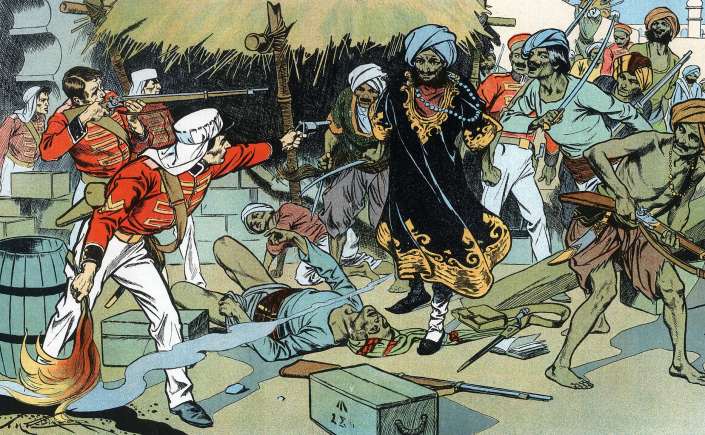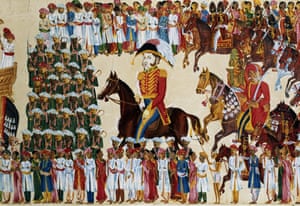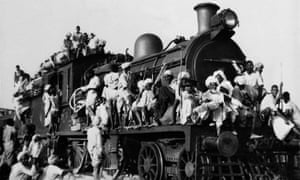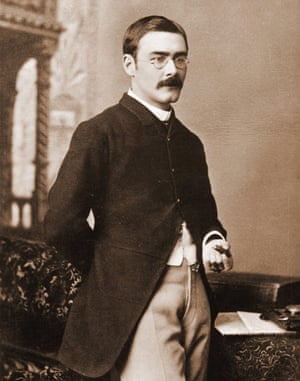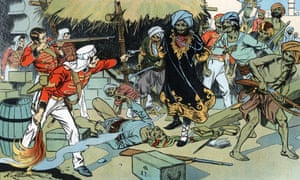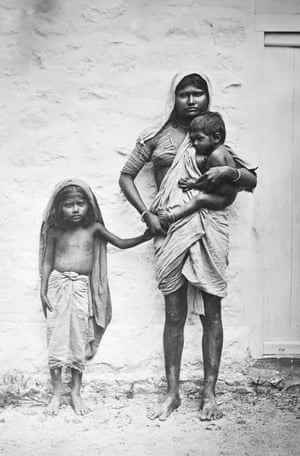During the closing scenes of The Man Who Shot Liberty Valance, the journalist says: “This is the West, sir. When the legend becomes fact, print the legend”.
Acclaimed British historian Max Hastings examines the reality of the events behind Christopher Nolan’s blockbuster whilst pricking the illusions and delusions of the Brexit balloon. “The irony…is that Churchill himself never saw anything in the least glorious about standing alone”. “Wars” said Winston, “are not won by evacuations”.
“After Brexit takes place I fear that this time around we shall be unable to rely upon the Russians to stage a grand diversion in the East to spare us from the hideous economic, social, cultural, and political consequences of attempting to fight on alone, without the impeccable justification that Hitler has forced such a course upon us”.
Whilst these are Hasting’s principal themes, he also demolishes a couple of common misconceptions. Firstly, the Dunkirk “miracle”, impressive as it was, was not the only major evacuation that harrowing summer. A few weeks later, “some 144,000 British troops, together with 24,352 Poles and 42,000 other Allied soldiers, were brought to England. Only historians are much aware of this “second Dunkirk”. Secondly, soldiers on the beach and commentaries thereafter talk of how the “bloody RAF!” was nowhere to be seen in the skies above Dunkirk. Recent archival research how shown that the RAF was indeed active in the hinterland, suffering heavy losses as it fought to prevent reinforcements and materiel reaching the Wehrmacht and and as it attacked the Luftwaffe before it hit the beaches.
During early 2018, I posted the following on the In That Howling Infinite Facebook page in response to an article in The Independent:
Once more into the breach…on Belgian beaches and parliamentary benches
This article, like many of its recent ilk, is bound to a create a furore among the “make Britain great again” brigade (I loved the Katie Hopkins connection…)
I recently watched Dunkirk and Darkest Hour to back, and they made curiously compelling companions. The best thing about Darkest Hour was Gary Oldman’s portrayal of Winston, and his delivery of the famous speeches (and I could happily watch loyal stenographer Lily James typing out menus all day long – she gave us a luminous Natasha in the Beeb’s recent and eminently bodacious War and Peace).
Dunkirk was harrowing for its portrayal of the chaos aboard the sinking hospital ship and the other doomed rescue ships, and for the chaos and confusion in the cockpits of the spitfires (is there anything Mad Max Tom Hardy isn’t in these days?)
But both films were quite corny and cartoonish in their representation of the “bulldog spirit” of the brave, plucky , and yes, white Englanders (Kenneth Branagh at his Shakespearean best, and Mark Rylance channeling Foyle’s War – there was, however, a token black chap with a small speaking role during Winston’s apocryphal trip on the London Underground – “Yes, Mister Churchill, we shall never surrender!”; and there was a single Frenchie on the beach, although he was nefariously disguised as a Brit and was outed immediately prior to his demise – played by Aneurin Barnard, another refugee from War and Peace, but being shell-shocked,incognito, or both, didn’t say a word). And apart from the speeches in Darkest Hour, the script in both films was hamfistedly cliched and clunky, and not much different from a Monty Python movie – or those patriotic Ealing Studios English war films.
Which might, of course, have been the intention.These two films and other nostalgia fests like the Crown and Victoria and Albert are quite in keeping with those Ealing films of old with their high production values, great actors like John Mills and Alec Guinness, stirring music in the Vaughn Williams vein, and hammy but patriotic scripts that were in their day Great Britishly politically correct.
For more posts by In That Howling Infinite, visit:
https://m.facebook.com/HowlingInfinite/
https://m.facebook.com/hf1983/

Splendid Isolation
Max Hastings, New York Review of Books, October 12 2017
Christopher Nolan’s epic movie about the rescue of the British army from the beaches of northeastern France in May 1940 has become a worldwide box office success. This is splendid news for its makers, and can do no harm to American, Taiwanese, or for that matter Rajput audiences. In the eyes of some of us, however, its impact upon the British people is calamitous at this moment in our fortunes.
Dunkirk contains no foreigners except a few understandably grumpy French soldiers. It is a British tale that feeds the myth that has brought Churchill’s nation to the cliff edge of departure from the European Union: there is splendor in being alone. This was most vividly expressed at the time by King George VI, who wrote to his mother: “Personally I feel happier now that we have no allies to be polite to & pamper.” One of the British officers who escaped with his battalion via the beaches greeted news that the French had surrendered on June 17 by exulting mindlessly to his comrades in the mess: “Thank heavens they have, now at last we can get on with the war.”
Michael Korda, for decades a celebrated New York publisher, was born in Britain in 1933; his father was Vincent Korda, one of three Hungarian-born brothers who were cinema wizards of their day. Now he offers two books for the price of one, interweaving a historical narrative of the events of 1939–1940, climaxing with Dunkirk, and a succession of vivid fragments of autobiography. He describes the flow of Jewish refugees through the North London homes of his childhood: “They had the haunted look of people who have just witnessed a bad accident, people with aggressive charm and formal manners who had grown up with the Kordas in Túrkeve, or had been to university in Budapest with Alex, or loaned him money, or worked with my father on film sets in Vienna, Paris or Berlin.”
Vacationing in France in the summer of 1939, as the world tumbled toward catastrophe, he recalls his actress mother constantly reprising the comic hit song of the day “Tout va très bien, Madame La Marquise,” which tells of an aristocratic woman on holiday who calls home to check that all is well and hears from her servants of one catastrophe after another, each described as “a little incident, a nothing,” culminating in the suicide of her husband and the incineration of her château. Korda writes: “Even as a boy of six, I observed that everybody in France talked about la ligne Maginot reverentially as if it were a holy object.”
He is very funny about his family’s experiences embarking on the film That Hamilton Woman, which eventually became one of Churchill’s favorites: his father, as set designer, failed to grasp that this was a tale of Admiral Nelson. Supposing it to be about General Wellington, he began to create a backdrop for the Duchess of Richmond’s ball in Brussels before Waterloo.
Once the European struggle began in earnest with the launch of Hitler’s blitzkrieg, Korda writes, “my mother, when she thought about the war at all, had the cheerful conviction that everything would work out well in the end because it always had for Britain, except for the war against the American colonies, and that was too long ago to matter.” He discerns among Britain’s modern Brexiters the mood that he himself witnessed after Dunkirk.
This comparison seems valid. Boris Johnson, Liam Fox, Michael Gove, David Davis, Iain Duncan Smith, Jacob Rees-Mogg, and their misbegotten Tory kin daily assure the British people that once we have cast off the shackles that bind us to Europe, caravels laden with the spoils of free trade will bring gold, frankincense, and myrrh to our island; as an added bonus, the sun will shine every day. Watching Dunkirk, I half-expected Foreign Secretary Johnson to appear in lieu of Winston Churchill, promising to hurl back the Hunnish hordes led by Angela Merkel, and to show no mercy to such knock-kneed Pétainistes as France’s Emmanuel Macron.
The irony, of course, is that Churchill himself never saw anything in the least glorious about standing alone. In May and June 1940 he moved heaven and earth—even fantastically offering Paul Reynaud’s government political union with Britain—to persuade France to stay in the war rather than sign an armistice. When the Nazis invaded Russia in June 1941, Churchill embraced the tyranny of Stalin, morally hard to distinguish from that of Hitler, and greeted the Russians as comrades in arms. The foremost objective of his premiership was to woo the United States into belligerence.
No man understood better than Churchill that while Britain might somehow avert defeat, without fighting alongside friends it could not conceivably aspire to victory. Only necessity and a supremely courageous willingness to defy reason, which many British politicians and generals felt unable to share, caused him in June 1940 to proclaim his country’s determination to fight to the last.
Our most eminent living historian, Sir Michael Howard, who lived through that era relatively early in his ninety-four years, observed to me recently: “The great lesson of my lifetime is that all difficult problems and challenges are best addressed with partners and allies.” This is the wisdom that the modern Brexiters seek to trample. They find the “Dunkirk spirit” refreshingly bracing, which Churchill certainly did not. “I cannot say that I have enjoyed being Prime Minister v[er]y much so far,” he wrote wryly on June 4, 1940, to one of his predecessors, Stanley Baldwin.
And so to the Nolan film. It possesses many of the virtues and vices of Steven Spielberg’s epics, wrapped in a Union flag instead of the Stars and Stripes. It looks terrific, though it is noisier than any battle I have ever attended. It contains some adequate acting, reminiscent of the silent movie era, because the stars deliver few coherent lines, being merely required to look staunch, stressed, and indomitable at appropriate moments.
The film opens with unseen Germans firing on a group of British soldiers in the deserted streets of Dunkirk, killing all but one, Tommy (Fionn Whitehead), whose experiences during the ensuing week, on the beaches and offshore, form a principal theme of what follows. At intervals between being bombed and strafed by the Luftwaffe, Tommy and various companions board ships in hopes of escape, only to find each in turn stricken. Nolan offers some extraordinary sinking scenes: Tommy’s escapes make Leonardo DiCaprio’s misfortunes aboard the Titanic seem tame stuff.
Meanwhile the Royal Navy has commandeered a host of small boats from the harbors of the South Coast and dispatched them to aid the evacuation. One boat owner, named Dawson (Mark Rylance), sets forth with his teenage son, Peter (Tom Glynn-Carney), and a young helper named George (Barry Keoghan). Their first encounter with the war comes when they rescue a traumatized soldier (Cillian Murphy) from a floating hulk. He is so appalled on finding that they are heading for Dunkirk, from which he has just escaped, that he tries to seize control of the boat, hurling George onto a ladder below, which his head strikes with fatal effect—a mawkish moment.
Meanwhile in the air, there are spectacular scenes as three Spitfires duel with the Luftwaffe over the Channel. One RAF pilot (Jack Lowden) ditches in the sea, from which he is rescued by Dawson and his son. As they then approach the beaches amid a throng of such craft, a colonel on the Dunkirk mole (an old term for a pier or jetty) asks the Royal Navy’s Commander Bolton (Kenneth Branagh) what the boats mean. Branagh offers a performance as the elegant, unruffled naval officer that Noël Coward—who played Captain Kinross, based on Lord Mountbatten, in that notable wartime weepie In Which We Serve—might identify with. Bolton answers the colonel laconically: “Hope.” In the cinema where I saw the film, at that moment the audience burst into applause.
The small boats, including Dawson’s, load up with soldiers amid worsening perils—oil from a sunken minesweeper blazes on the water—before setting course for home and a heroes’ welcome. Commander Bolton gallantly lingers on the mole to ensure that some French soldiers can also get away. He remarks wryly that it has been not a bad fortnight’s work to rescue 338,000 British, French, and Belgian troops, when at the outset it was thought that no more than 30,000 could be taken off. Back home, the rescued Tommy reads in a newspaper Churchill’s heroic words to the nation, concluding with the vow that Britain will never surrender.
Most of us would agree that no work of art, whether novel, play, or film, has a responsibility to represent history accurately, any more than Shakespeare did, or David Lean’s Lawrence of Arabia. Spielberg’s Saving Private Ryan opens with a thirty-minute portrayal of the 1944 D-Day landings that is as vivid and realistic as anything we are ever likely to see on screen. Thereafter, however, that film deteriorates into routine Superman stuff that bears no relationship to anything that happened to US soldiers in Normandy. The mini-series Band of Brothers is a superb piece of filmmaking, probably the best ever made about Americans in World War II, but it is suffused with the romanticism that colors all of Spielberg’s work as well as much of that of Stephen Ambrose, who wrote the book from which it derives.
Nonetheless, for the record, we shall consider how far Nolan’s film tells the Dunkirk story like it was. There is no historical background to explain why the British army found itself on the beaches. On May 10, 1940, Hitler invaded France and the Low Countries. The British army, together with a substantial French force, promptly hastened north into Belgium, expecting the Germans to reprise their 1914 Schlieffen offensive.
Instead, however, in fulfillment of the only authentic personal inspiration of Hitler’s career as a warlord, the Wehrmacht’s main thrust pushed through the Ardennes, meeting the French army where it was weakest and bursting across the Meuse. The British found themselves falling back, fighting desultory actions but chiefly making haste to avoid encirclement. When the panzers reached the Channel coast, cutting off the British, the Belgians, and the French Seventh Army from the bulk of France’s forces further south, evacuation became the only plausible, though immensely difficult, option.
The first miracle of Dunkirk was that the German army scarcely interfered with the evacuation, partly because Hermann Goering assured Hitler that the Luftwaffe could dispose of the British, and partly because Churchill’s contingent was marginal alongside the forty-three divisions of the French army still in the field further south. There was no ground fighting in the town or port, so Nolan’s opening scene is spurious.
In the film, all the big ships seeking to rescue troops are sunk in dramatic circumstances, leaving small craft to do the business. This is a travesty. The Royal Navy sent thirty-nine destroyers to Dunkirk, of which only six were sunk, although many were damaged. Two thirds of all the men brought home sailed in big ships, notably including the destroyers, just one third in smaller ones.

The film shows air battles low over the Channel, whereas many soldiers came home full of bitterness toward the RAF because they never saw its aircraft: combat took place thousands of feet above, invisible to those on the ground or at sea. On the British side, it was dominated by Hurricanes, not Spitfires. Nolan shows a fighter floating for some minutes after ditching, whereas the huge Rolls-Royce Merlin engine in its nose would have sent the plane plunging to the bottom within seconds.
The character of Dawson may owe something to Charles Lightoller, a former officer on the Titanic who at the age of sixty-six took his boat Sundowner to Dunkirk, accompanied by his son and a friend, and brought home 120 men. Commander Bolton’s role at Dunkirk was fulfilled in reality by Captain Bill Tennant, who did a superb job as senior naval officer. Oddly enough Tennant, as evidenced by his diary, later became a bitter critic of Churchill’s war leadership.
Onscreen, endless British soldiers perish. Michael Korda suggests that the British army’s rate of loss was “comparable to that in the bloodiest battles of the First World War or the American Civil War, and an indication of just how hard the fighting was.” Yet what was remarkable about the real event was how few men died. In the entire May–June 1940 campaign, including Dunkirk and later episodes, just 11,000 British troops were killed, compared with at least 50,000 French dead.

A further 41,000 British troops were taken prisoner by the Germans, but alongside the 193,000 brought home, the “butcher’s bill” was small. General Sir Harold Alexander, who commanded the rear guard, told Anthony Eden on his return: “We were not hard pressed, you know.” This remark is sometimes cited as an example of his bent for heroic understatement, but was no more than the truth.
Cinema audiences are left to assume that after Dunkirk, the British sat down on their island and prepared to resist the Nazis on the beaches. In truth, in one of Churchill’s more spectacular follies, he promptly insisted upon dispatching another two divisions, one of them newly arrived Canadians, to Normandy and Brittany to show the French government and people that Britain remained committed to fight on at their side.
His chief of staff, Major General “Pug” Ismay, gently suggested to the prime minister that it might be wise for these troops to proceed slowly toward France, since it was obviously doomed. “Certainly not,” replied Churchill angrily. “It would look very bad in history if we were to do any such thing.” Few great actors on the stage of world affairs have been so mindful of the verdict of future generations. On June 13, four days before the French surrender and nine days after the Dunkirk evacuation ended, British soldiers were still landing at Breton ports.
By yet another miracle, within days of arrival in France their commander, Lieutenant General Sir Alan Brooke, persuaded Churchill that they must come home. This time there were no beaches—they embarked through the ports. Many prisoners, tanks, and vehicles, including the entire 51st Highland Division, fell into German hands and there was a spectacular disaster when the liner Lancastria, carrying over three thousand men, was sunk by air attack.
But thanks to Brooke, the prime minister was spared from evil consequences of his reckless gesture. Some 144,000 British troops, together with 24,352 Poles and 42,000 other Allied soldiers, were brought to England. Only historians are much aware of this “second Dunkirk,” and it seems ill-natured to make much of the fact that of 100,000 French soldiers brought to Britain, even De Gaulle at his most sanguine admitted that only one third agreed to serve with his newly created Free French forces, while the remainder preferred repatriation to France.
As for the British people, for the rest of 1940—the mood turned sourer in the following year—they did indeed display a stoicism and even euphoria as irrational as today’s Brexiter exultation. The MP Harold Nicolson wrote in his diary on June 15:
My reason tells me that it will now be almost impossible to beat the Germans, and that the probability is that France will surrender and that we shall be bombed and invaded…. Yet these probabilities do not fill me with despair. I seem to be impervious both to pleasure and pain. For the moment we are all anaesthetised.
The writer Peter Fleming, then an army staff officer, wrote in a similar vein: “It was as though the whole country had been invited to a fancy-dress ball and everybody was asking everybody else “What are you going as?” A latent incredulity [gave]…problems connected with invasion the status of engrossing digressions from the main business of life…. The British, when their ally was pole-axed on their doorstep, became both gayer and more serene than they had been at any time since the overture to Munich struck up in 1937.
Among countless reasons for revering Churchill’s performance in 1940 is that he himself never for a moment succumbed to such silliness. Though he justly described Dunkirk as a deliverance, he also warned the House of Commons and the nation that “wars are not won by evacuations.” He knew that while the men had been brought home, almost all their weapons and equipment had been lost: the British army was effectively disarmed.
Thereafter he and his nation set the world a magnificent example of defiance. But it was an impotent defiance, from which both Britain and democracy were redeemed only by the belated arrival of allies. It was 1944 before Churchill’s soldiers, aided by huge infusions of American men, matériel, and especially tanks, were fit to face a major European battlefield.
In the intervening four years, relatively tiny British forces fought the Germans in North Africa and Italy, and a large imperial army surrendered to the Japanese at Singapore in February 1942. Contrary to persisting British delusions, Hitler’s enmity and ambitions always focused on the East. Because of his invasion of Russia, the British and later the Americans were granted the priceless luxury of being able to prepare at leisure for the belated June 1944 liberation of northwest Europe: the band of brothers of the US 101st Airborne Division, for instance, spent almost two years in uniform before hearing a shot fired in anger.
Michael Korda suggests that thanks to the final triumph in 1945, “Dunkirk was, and remains, perhaps the greatest British victory of World War Two, that rarest of historical events—a military defeat with a happy ending.” This assertion stretches a very large point, not least because Churchill himself regarded the outcome of World War II as anything but happy, since Britain’s voice in the world, not to mention his own, had become so much diminished.
It would be unreasonable to demand that Christopher Nolan should have injected more than a fraction of these realities into his Dunkirk. The most absurd assaults on the film come from India, where critics complain that he does not feature the two companies of Indian service troops who were present on the beaches. This is comparable to the British wailing when Saving Private Ryan appeared that their soldiers were absent without leave from the screen. I wrote at the time that if any nation wants its part in any conflict glorified, it must make the films for itself.
Nolan seems to deserve congratulations for declining to include even a token American, for decades a prerequisite for securing a US audience for a British war movie. Indeed, this imperative so intimidated many British directors and their screenwriters that gallant American characters were often depicted showing the stupid English how battles should be fought.
This latest epic represents a version of history little worse than The Longest Day, A Bridge Too Far, or The Guns of Navarone. Some of us are grateful that so many schoolchildren are going to see it, because they will at least discover that in 1940 there were beaches, the rescue of an army, and sacrifice and considerable fortitude by their forefathers. Britain’s grown-ups, however, should have been forcibly denied entrance to cinemas at this moment when we are threatened with embarkation upon one of the most self-indulgent, willfully foolish acts of self-harm in the nation’s history.
For all the charm of Michael Korda’s personal reminiscence of 1939–1940, he is on much less sure ground in his narrative of the big events, partly because he is obviously a romantic, and partly because he relies heavily on elderly sources, including the British official history of the campaign in France, much of which is tosh. He is surely right, however, to conclude his book by comparing the emotions of the modern Brexiters with those of the British in June 1940: “There was a national sense of relief…at leaving the Continent and withdrawing behind the White Cliffs of Dover.” After Brexit takes place I fear that this time around we shall be unable to rely upon the Russians to stage a grand diversion in the East to spare us from the hideous economic, social, cultural, and political consequences of attempting to fight on alone, without the impeccable justification that Hitler has forced such a course upon us.























